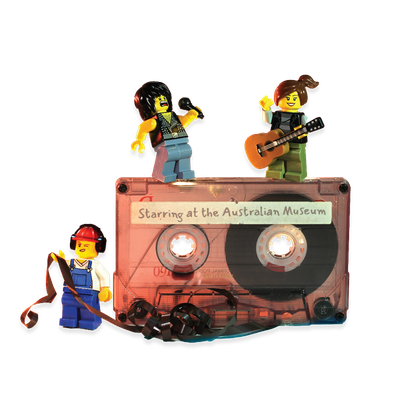Your search returned 41 results
By Page Type
By Tag
- All
- fish (966)
- blog (696)
- fishes of sydney harbour (401)
- First Nations (298)
- Blog (236)
- AMRI (169)
- archives (164)
- Eureka Prizes (146)
- Aboriginal and Torres Strait Islander (135)
- insect (126)
- Ichthyology (124)
- geoscience (109)
- minerals (102)
- climate change (99)
- podcast (94)
- Fish (91)
- Anthropology (89)
- International collections (80)
- Minerals Gallery (78)
- wildlife of sydney (78)
- Labridae (77)
- frog (74)
- gemstone (70)
- photography (66)
- history (64)
- Mollusca (60)
- gem (59)
- staff (59)
- Birds (56)
- Gems (56)
- Indonesia (56)
- education (56)
- shark (55)
- AMplify (54)
- people (53)
- earth sciences (50)
- exhibition (50)
- past exhibitions (50)
- Gobiidae (48)
- sustainability (46)
- Pomacentridae (45)
- Serranidae (44)
- lifelong learning (42)
- science (42)
- Earth and Environmental Science (41)
- Syngnathidae (41)
- Ancient Egypt (40)
- Bali (40)
- bird (40)
- dangerous australians (40)
-
Water and sedimentary transport
https://australian.museum/learn/minerals/shaping-earth/water-and-sedimentary-processes/Water plays a vital role in most sedimentary processes. Pure water itself has little effect on rocks. It is the dissolved gases in water, particularly carbon dioxide, that cause the chemical decay of minerals and mineral dissolution.
-
Igneous rock types
https://australian.museum/learn/minerals/shaping-earth/igneous-rock-types/Igneous rocks can be divided up into four groups, based on how they were formed and what they are made of.
-
Volcanic landforms
https://australian.museum/learn/minerals/shaping-earth/volcanic-landforms/Each type of volcanic massif (structure) contains lavas, pyroclastic rocks and intrusions, but these differ in proportions and compositions.
-
Sedimentary processes
https://australian.museum/learn/minerals/shaping-earth/sedimentary-processes/Sediments are formed by the breakdown (both physical and chemical) of pre-existing rocks, which may be of igneous, metamorphic or sedimentary origin.
-
Radioactive dating
https://australian.museum/learn/minerals/shaping-earth/radioactive-dating/Radioactive dating is a method of dating rocks and minerals using radioactive isotopes. This method is useful for igneous and metamorphic rocks, which cannot be dated by the stratigraphic correlation method used for sedimentary rocks.
-
Pyroclastic processes and materials
https://australian.museum/learn/dinosaurs/pyroclastic-processes-and-materials/Pyroclastic means 'fire broken' and is the term for rocks formed from fragments produced by volcanic explosions.
-
Glossary of geoscience terms
https://australian.museum/learn/minerals/shaping-earth/glossary-geoscience-terms/Geoscience (also known as earth sciences and geology) is the study of the Earth and includes all non-living parts of our environment, and everything below the Earth's surface. Here are some common geoscience terms explained.
-
The 'Barratta' Meteorite
https://australian.museum/learn/collections/natural-science/mineralogy/mineralogy-collection-the-barratta-meteorite/The story of the 'Barratta meteorite' has a rather uncertain beginning. One version claims that in 1859 a stockman witnessed spectacular light and sound effects at a place where pieces of the meteorite were later found.
-
Metamorphic rocks
https://australian.museum/learn/minerals/shaping-earth/metamorphic-rocks/Metamorphic rocks form because of changes in temperature and depth of burial within the Earth in a solid state without actual melting.
-
What are minerals?
https://australian.museum/learn/minerals/what-are-minerals/Minerals are the building blocks of our planet. Discover what they reveal about the history of Earth and our solar system and what makes them so essential to our existence.
-
Discover more
2025 Australian Geographic Nature Photographer of the Year
Special exhibition
Free entry
Now open -
Discover more
Unfinished Business
Special exhibition
Free entry
Now open -
Discover more
Wansolmoana
Permanent exhibition
Free entry
Open daily -
Find out more
Burra
Permanent kids learning space
Free entry
10am - 4.30pm![]()
-
Discover more
Minerals
Permanent exhibition
Free entry
Open daily![]()




